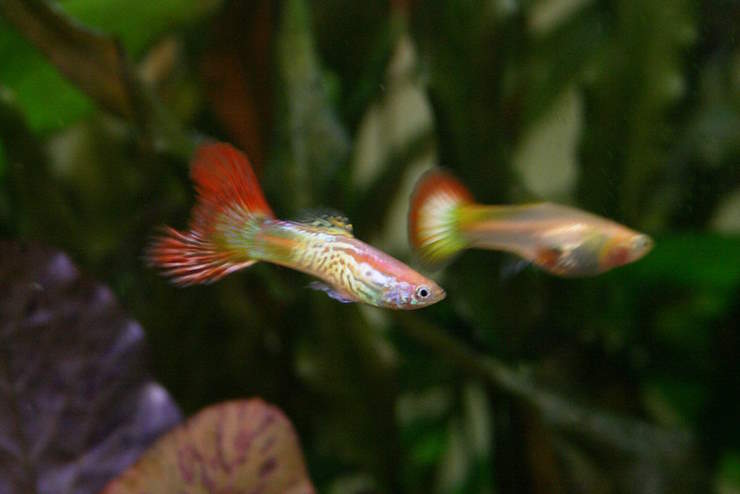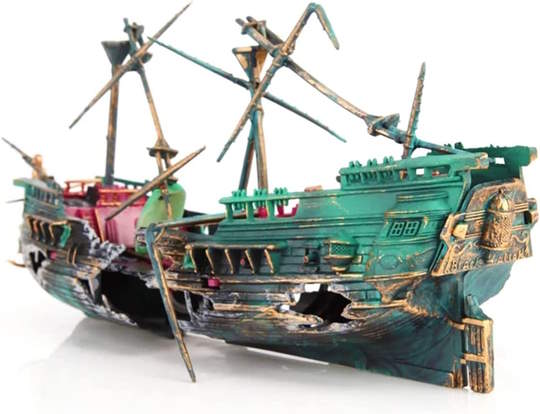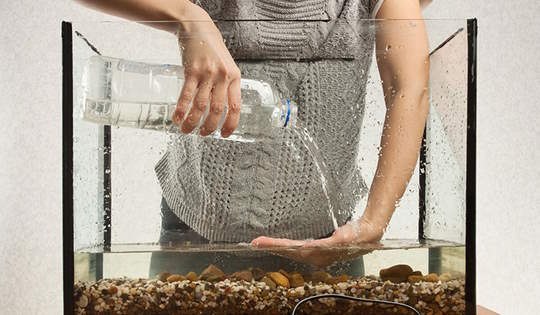Setting up a fish tank can be a fun and rewarding experience, but it’s essential to do it right to ensure the health and happiness of your aquatic friends.

This step-by-step guide will help you create a thriving underwater environment you and your fish can enjoy for years.
- Choose the right aquarium: The first step in setting up a fish tank is to choose the right aquarium for your needs. Consider the size, shape, and material of the tank, as well as the type of fish you want to keep. Remember that larger tanks are generally more stable and easier to maintain but require more space and can be more expensive. Find how to choose the right tank here.
- Select a suitable location: Find a spot in your home where the aquarium will be safe from direct sunlight, drafts, and temperature fluctuations. Also, ensure the area can support the weight of a filled tank and that it is near electrical outlets for plugging in essential equipment.
- Prepare the tank: Before adding anything to your aquarium, clean it thoroughly with warm water and mild detergent. Rinse it well to remove any residue, and then dry it thoroughly. Never use harsh chemicals or cleaning agents, as they can harm your fish.
- Install the substrate: The substrate is the material layer covering the bottom of your fish tank. It can be made from gravel, sand, or other materials designed for aquarium use. Rinse the substrate thoroughly before adding it to your tank, and create a layer about 1-3 inches deep. Slope it slightly towards the front for a better visual effect. If you will have live plants, add finer-grained soil at the bottom and coarser materials on the top.
- Add decorations and hiding spots: Decorations enhance the visual appeal of your fish tank and provide hiding spots and resting areas for your fish. Choose items like rocks, driftwood, or aquarium-safe ornaments to create an engaging environment. Remember to clean and rinse these items before placing them in your tank.

Sunken ships are among common aquarium decoration themes, but your imagination is the only limit. - Set up the filtration system: A good filtration system is crucial for maintaining water quality and keeping your fish healthy. Choose a filter appropriate for the size of your tank and the type of fish you plan to keep. As a beginner, you are most likely to use an internal or hang-on filter. They’re affordable and easy to set up. Follow the manufacturer’s instructions to install the filter and ensure it functions properly.
- Install the heater and thermometer: If you plan on keeping tropical fish, you’ll need a heater to maintain the water temperature. Place the heater near the filter to ensure even heat distribution, and set the temperature according to the needs of your chosen fish specie. Attach a thermometer to monitor the water temperature.
- Add lighting: Proper lighting is vital for the health of your fish and plants. Install an aquarium light that provides the correct spectrum for the type of fish and plants you have. Follow the manufacturer’s recommendations for the duration of daily light exposure.
- Fill the tank with water: Fill your tank with dechlorinated water. You can get rid of chlorine by use of designated chemicals or just letting the water sit for a few days in room temperature. The latter is easy but requires a container to store the water. Fill the tank slowly to avoid disturbing the substrate and decorations. You can also pour water over your palm, to avoid disturbance. Let the water settle, and the temperature stabilize before adding fish.

Pouring water over your palm will reduce the flow and the disturbance to soil and decorations. - Cycle the tank: Establish your tank’s nitrogen cycle before introducing fish. This process involves the growth of beneficial bacteria that break down harmful ammonia and nitrite. You can cycle the tank using fish food or a commercial bacteria starter. Monitor the water parameters until ammonia and nitrite levels drop to zero. Learn more about the nitrogen cycle here.
- Acclimate and introduce fish: Once your tank is cycled, you can add fish. Read here to know which species are best to start with. Acclimate them to the new environment by floating their bag in the tank for 15-30 minutes. Then, slowly mix tank water into the bag to let the fish adjust to the new conditions. Gently release the fish into the tank, avoiding transferring bag water. Read a more thorough guide to introducing new fish here.
- Ongoing maintenance: Regular maintenance is essential for a healthy fish tank. Perform partial water changes, clean the tank and the filter, and monitor water parameters regularly. Feed your fish a balanced diet, and enjoy watching your underwater world thrive.
Setting up a fish tank is a rewarding experience that requires proper planning and attention to detail. Following this step-by-step guide can create a thriving aquatic environment for your fish. With regular maintenance and care, you and your fish will have a beautiful and healthy home for years to come.
Leave a Reply